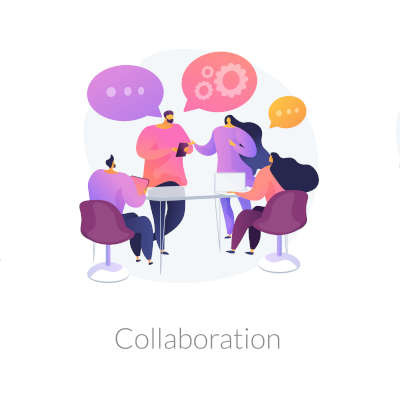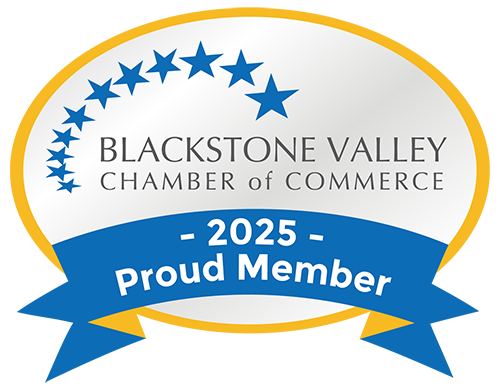JS Business Solutions Blog
Modern businesses lean heavily on collaboration, and without efficient and reliable file sharing, that strategy goes out the window. It’s important that you know how to build and maintain solid file sharing practices and get the technology you need to make that possible. In today’s blog, we will give you four tips on how to build an efficient and secure file-sharing platform that can take your business a long way.
A good business creates a lot of beneficial relationships. This means contracts and other data that need to be shared and filed away. While this seems like a straightforward issue, technology is available today that any business can take advantage of that can reduce their filing costs and make their file sharing more efficient. Let’s take a look at this technology today.
Of all the aspects that play a part in your business’ success, its company culture can often be overlooked as nothing more than a perk… something nice to offer the team, but ultimately unimportant. This is very much a misconception.
Let’s discuss how valuable a positive company culture is, and how to develop one in your business. Don’t worry, we’ll get into the technology of it all, too.
Communication and collaboration tools are central to the success of any business—especially in today’s connected business landscape. More than anything else, you cannot let your collaboration tools put your company data at risk. We have some tips you can use to avoid some of the common challenges that businesses face with collaboration and data security.
Collaboration is a major part of any business endeavor, and if you play your cards right, you can use effective collaboration methods to improve your company’s productivity and innovation. At the heart of these improvements is technology; the right tools can streamline collaboration and make your efforts much more efficient and effective.
Today’s business leans on collaboration more than ever. Employees that work together efficiently and effectively can streamline processes and create a lot of positive momentum for a business that includes enhancing productivity and fostering innovation. Let’s go through a few variables that fuel solid collaboration.
Oh, the afternoon meeting, the woe of many office workers around the world. Sometimes they are fine, but other times, it’s very clear that they are not always an effective use of your time. Despite this, there is still a heavy emphasis on meetings in the workplace, to the point where some employees feel that their time is being wasted and misused as a result—a premise that is supported by surveys and research.
Last week, we wrote about how patience plays a big role in people’s ability to be productive and efficient. This week we want to explore a few ways to help the people in your organization to become more patient. We all know people in our lives that seem like they could definitely take a chill pill. If that is you, using these four suggestions can help you be more patient in situations that demand it.
People can be very productive. They can also be pretty terrible at being productive. The staff that can find consistency in their productivity typically results in a pretty successful business. Obviously, people have all types of suggestions on how to improve staff productivity, individual productivity, and a lot of it is just hitting on the same stuff. There is one variable, however, that is found in a lot of productive people: Patience.
Productivity is the measure of how your business operates. Without a certain standard of it, any business will stagnate or fail. The overall productivity of your business comes down to a combined effort of the tools you deploy and your employees’ ability to maximize individual productivity. This week, we will take a look at how the emergence of technology built specifically for your business directly correlates to higher degrees of productivity.
As businesses have witnessed how both in-person operations and remote work practices can offer unique value to their processes and procedures, hybrid work has become a more popular approach. This has in turn led to many businesses reconsidering how their business’ space is utilized…and even how much they need.
At the end of the day, the tools you provide for your employees are going to make or break their productivity, so why not look at your employees, not as end users, but also customers? By examining the way that industry trends impact the decisions of consumers, you can implement more effective communication solutions that will allow your employees to flourish in the workplace.
Collaboration platforms are all the rage these days, and one of the more notable choices out there is Microsoft Teams. With any collaboration software, there will be best practices that you can use to get the most out of it, and Teams is no exception to this rule. Let’s go over how you can use Teams to the best of your ability.
At this point, the term “collaboration” has fully transitioned from an intriguing operational ideal, to an overhyped buzzword, to a legitimately essential consideration for any modern business to embrace. As such, it makes sense that there are so many collaboration-geared applications available today, with so many options to pursue this collaboration baked into each.
Let’s consider the many, many collaborative capabilities that are available in Google Drive—a tool that is used by many businesses today.
Conferencing has played a crucial role for businesses, and never more than in the past year. Unfortunately, this has presented the opportunity for trolls to join in these remote collaboration efforts, interrupting them with inflammatory and vulgar content. Labelled “Zoombombing”, these attacks have led to the implementation of numerous privacy protections and countermeasures… but the question remains: how effectively do these protections defend a business’ efforts?
As a study has revealed, not effectively enough.
Collaboration is central to most business’ production strategies nowadays. It’s no secret that businesses are doing more with less and in order to coordinate resources that are stretched thin, companies are looking to collaborative software titles. Today, we will briefly go through three of the most popular collaboration apps to give you an idea of what they can bring to your business.
There is no denying that “collaboration” is one of the biggest business buzzwords right now… and for good reason, since it is a prerequisite for any business seeking to compete in its market. Let’s take a different tack than we usually would and consider some of the non-technical elements your business needs to incorporate to encourage collaborative work.
Businesses of all shapes and sizes rely on the telephone to support their operations, which has historically required no small investment on their part. Today, however, there is a much more cost-effective option in Voice over Internet Protocol (also known as VoIP). Let’s consider a few reasons that businesses should see VoIP as the superior option.
Collaboration is widely accepted as a “must-have” in the current, connected business environment… at least, for any organization that wants to remain competitive. Let’s take a few moments and consider what needs to be present for any collaborative efforts to be successful, and the skills you should work to develop in your team members to enhance their capacity for cooperation.
Collaboration is a critical consideration—especially nowadays, with more people than ever before working remotely. Fortunately, there are plenty of solutions available today that enable the level of communication necessary for effective collaboration to take place. Let’s go over some of the tools your business should embrace to fulfill its needs.






















